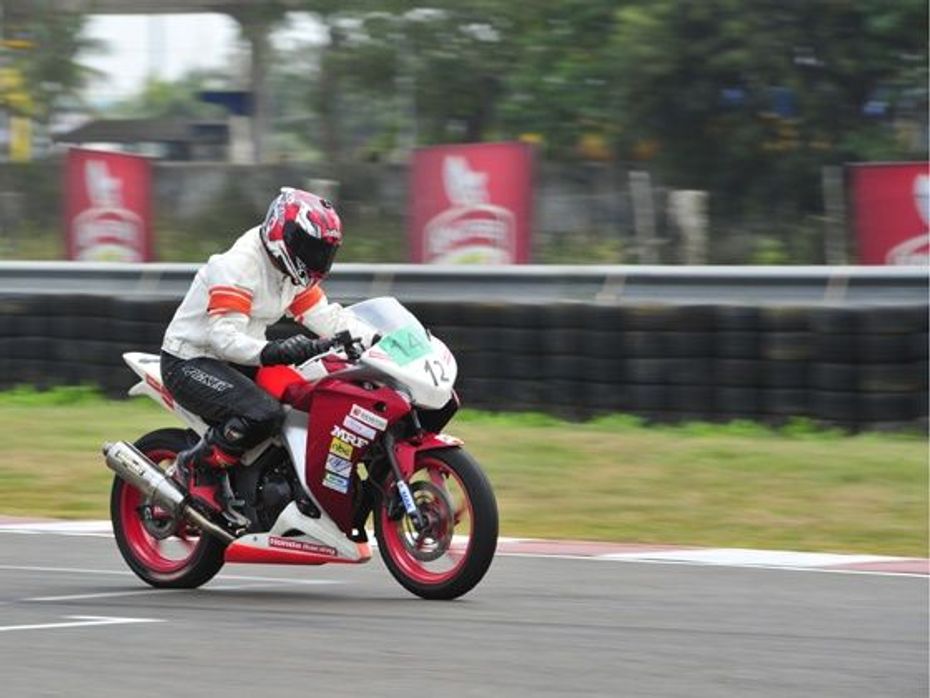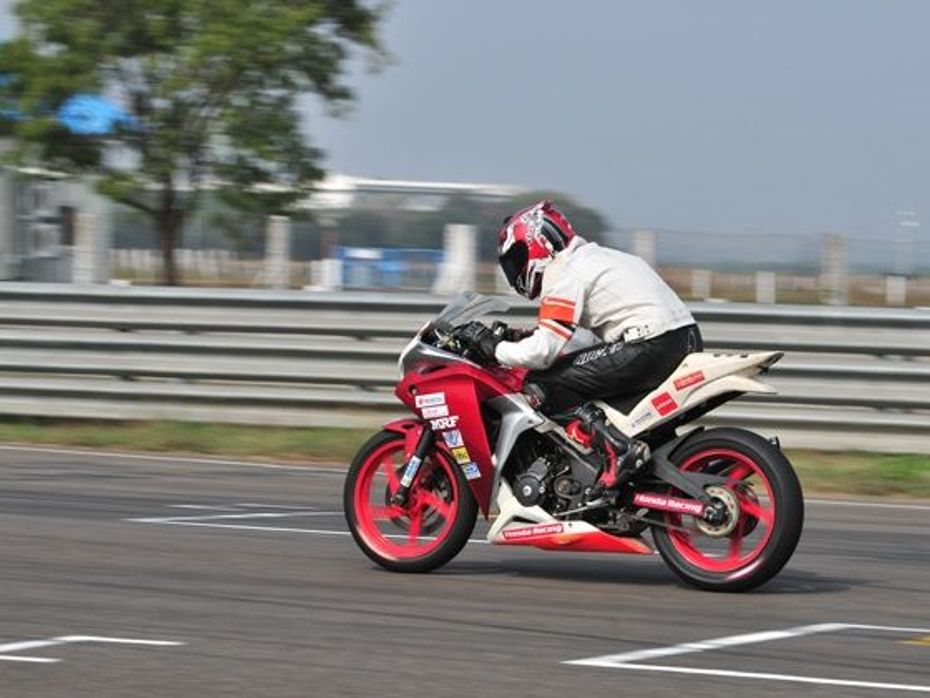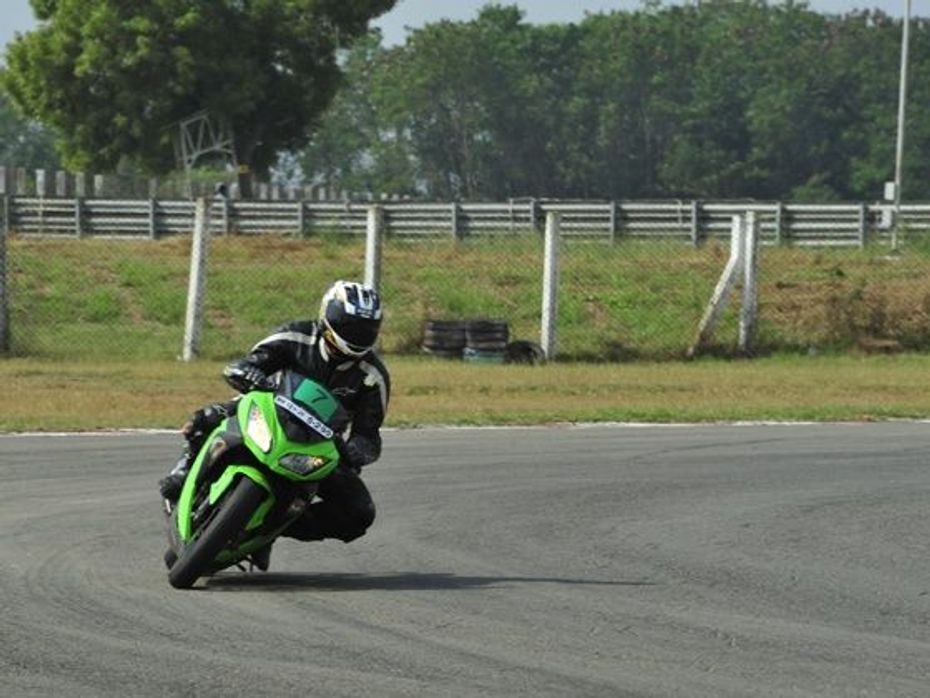
EXCLUSIVE: 2024 Bajaj Pulsar 150 Launched, Know Onroad Price, New...
- Apr 9, 2024
- Views : 6239


Two grueling days. Lot of track time. And relentless attempts at acquiring 10 new motorcycling skills. That’s what the California Superbike School India or CSS has been for us so far. But, it doesn’t end there because today, day three or Level 3, promises to be the most demanding yet. If you haven’t read our Level 1 and Level 2 reports already, do so here (level 1) and here (level 2); if nothing else, it will set the tone for Level 3.
So while Level 1 at the California Superbike School India was more about learning basic motorcycle skills like how to best use the throttle and where and how to turn, Level 2 was all about where to look and how to make your eyes work for you instead of against you.
Level 3 though is mostly physical. It’s all about how to hold the bike and how to make it turn while performing some mild gymnastics to get the desired results. However, unlike Level 1 and Level 2, today, we will only be learning four new riding techniques. Phew.

Hook turn
It’s a wide corner. The reference points have been picked, the apex has been hit and now it’s time to throttle out. And the rider does. But, the bike begins to run wide. What does one do then? Another steering input? Roll off the throttle? Tap the brakes? None of the above, is what the coaches at CSS will tell you. What one needs to implement now, is the hook turn. In theory, it’s pretty clear-cut. If the bike begins to run wide, drop the inside elbow down and watch the bike tighten its line. And it’s based on science (surprise, surprise). Dropping the inside elbow when leaned over transfers the rider’s weight to the front of the bike. This in turn compresses the front forks and with it, shortens the motorcycle’s wheelbase. And this reduction in wheelbase helps tighten the line. Brilliant.
What did I learn?
It takes some effort to implement the hook turn. And it works best if the rider is already crouched down on the bike while leaning it instead of being more upright as was the case with me. So, to implement the hook turn I had to make a deliberate attempt to first get my torso closer to the tank and then drop the elbow down. Not only did this take longer but it also upset the bike somewhat because I was moving around so much. After a few laps and some seriously exaggerated gestures from Martin (my coach), I did manage the hook turn around a couple of corners. And it worked superbly; I could clearly see myself getting closer to the inside kerb which a moment ago was running away from me. It is a big confidence booster.

Knee to Knee
Did we say Level 3 was physical? Well, it’s actually excruciating. The knee to knee in particular. Remember rider input, wherein putting weight on the handlebar was a strict no? Well the knee to knee technique is a way to ensure the rider doesn’t hold on to the bar tightly while shifting the body from left to right or right to left to align with the turn. All the rider needs to do is bring the inside knee to grip the tank hard along with the outside knee and use this as leverage to move to the other side of the motorcycle.
What did we learn?
Firstly, having strong thigh muscles is a must to execute knee to knee, especially if you are on the heavier side. That said, it was easy to put in practice. And doing so eliminated the shake my motorcycle encountered every time I shifted my body while hanging on to the handlebar. It was most effective around a series of quick corners. It also left me with a realisation – it’s probably time to start working out…

Hip Flick
A hip flick is similar to the knee to knee technique and this too requires strong thigh muscles to execute effortlessly. The procedure is the same – get both knees together on the tank, hold the tank tightly as if your life depended on it and shift from one side to the other in a quick and seamless movement. But instead of moving the entire body to the other side of the motorcycle to align with the upcoming turn (knee to knee), a hip flick requires the rider to only move the hip to the other side while the top half of the body continues to lean with the motorcycle. The best time to execute a hip flick is when the bike begins to stand up.
What did I learn?
A hip flick, no matter how tedious, still helped me setup early for upcoming turns. And like most things the California Superbike School India teaches, the hip flick didn’t come naturally to me either. Clearly, like the pick-up drill, I need to practice this technique a whole lot more as well to be able to execute it corner after corner with precision and ease.

Line of attack
The level 3 curriculum ends with the hip flick. Line of attack is an introduction to Level 4. Now unlike Level 1, Level 2 and Level 3 which are for street and track riders as well as racers, Level 4 is customisable and is developed solely for racers. It is the Level wherein the rider needs to start using what’s inside his/her head than just techniques to see him/her through. Line of attack gets the rider to change the line entering into a corner and that changes the turn-in point, the apex and possibly the exit. The idea here is to think and make corrections in speed and inputs so that the motorcycle still manages to exit as close to the exit marker as possible.
What did I learn?
Not a lot given this is best executed in a race. On my own, taking a new line of attack (entering into the corner from the inside instead of a wider entry) meant I had to slow down a lot more and I had to lean the bike harder to make the apex… which of course, I didn’t. I did hit the exit markers, nonetheless, but at a much slower pace than before. Not that I am too worried about it; after all, racing as a career for me isn’t even a possibility!
Finally then, after three days and three Levels of the California Superbike School India, all I can say is: if you want to ride better, smoother, safer and faster, spend the money and get some good coaching at CSS. As for me, going back to school was never this much fun!

EXCLUSIVE: 2024 Bajaj Pulsar 150 Launched, Know Onroad Price, New...

All-New Bajaj Pulsar NS400 Launch Confirmed: May 3, 2024

Ather Rizta vs Ola S1 Air vs Bajaj Chetak vs TVS iQube :...

Ather Rizta’s Underseat Storage Revealed In New Teaser

Ather Rizta Launch On April 6: From Expected Price To Range...

Bajaj Pulsar NS400 Spied For The First Time, Ahead Of Its Launch On...

6 New Royal Enfield Bikes Launch On Track: Royal Enfield Classic 350...

Ather Rizta Launch Tomorrow: Know Expected Price, Range, Features And...

BREAKING: Ather Rizta Launched In India At Rs 1.10 Lakh
India's largest automotive community